BUILDING GREEN
Healthy buildings, healthy occupants.
There is a growing interest in designing, building and occupying more environmentally sensitive structures.
Green Building integrates natural resources and community concerns into the design and construction to create buildings that are healthier for the occupants and the environment.
Green homes are more environmentally friendly, including being more durable, and less polluting, as well as making substantially better use of resources.
- Waste management
- Water conservation
- Renewable energy sources
- Recycled/reused materials
- Non-toxic materials
- Energy efficiency
- Reduced environmental impact on the building site
- Wise use of space/reduced building size
- Balance of environmental and economic considerations
Renovating or Remodeling – No matter how old your home is, there are easy ways to lower our water and energy bills while conserving our natural resources.
- Replace light bulbs with compact fluorescents
- Insulate and seal your home
- Replace drafty windows with double pane glass
- Insulate your water heater and exposed pipes
- Shop Smart – look for the Energy Star label
- Grow Green – plant deciduous trees to block sun in warmer months and let light in during the winter
- Save Water – choose water efficient faucets, shower heads and toilets
- Take advantage of incentives – contact your local utility company to find out if you qualify for some type of energy incentive or rebate
Building Green Glossary
Green build materials are composed of renewable rather than non-renewable resources. Save money and resources while creating a healthy, comfortable environment. Click an item below to learn more.
Bamboo
used for flooring and furniture, much harder than Maple, bamboo can be harvested every 3 to 4 years. Plus, the bamboo plant does not die when harvested – it grows back.
Carbon Monoxide detectors and humidity sensors
Warn occupants of health hazards.
Central vacuum systems
very effective and convenient and they isolate the collection of household floor pollutants to a location safely outside the living space.
Compact fluorescent light bulb
A fluorescent light bulb designed to replace regular incandescent bulbs. They offer an excellent light quality, long life and only a fraction of the electricity of a normal bulb.
Cotton Insulation
Insulation made from recycled cotton textile trimmings. Typically treated with nontoxic fire retardant and sold as batting that fits between framing studs.
Cork flooring
Attractive, durable, easy to maintain and environmentally responsible. Made from the bark of Mediterranean Oak trees. Can be harvested every nine years.
CRI Green Label carpets & pads
A testing and labeling program for “low-emitting” carpets and underlayment. Products that don’t release significant pollutants into the building.
Deconstruction
The practice of disassembling rather than demolishing a building so that its components can be reused.
Double-glazed windows
Windows with two panes of glass separated by air space. Double-glazed windows reduce heat and sound transmission. Some also contain a gas, such as argon or krypton, in the air gap to provide additional insulation.
Energy Star
A program sponsored jointly with the U.S. Environmental Protection Agency and the Department of Energy that promotes energy-efficient products, homes, and technology. Energy Star homes in Oregon are at least 15% more efficient than their conventional counterparts. The joint program was created to help us all save money and protect the environment through energy efficient products and practices. http://www.energystar.gov.
Engineered wood
Building products, including beams, framing studs, floor and roof joints, that are made from wood fibers bound together with adhesives. These products can provide a straighter, stronger, more consistent structure that protects forests by using fast-growing, rapidly renewable tree species.
Formaldehyde
A colorless, pungent gas used in many glues, adhesives, coatings, and preservatives. Products and materials containing formaldehyde can release this chemical into the air.
Green building
A phrase referring to building practices that use energy, water and other resources wisely.
Green roofs
consists of vegetation and soil, or a growing medium, planted over a water proofing membrane. They are used for their storm water management and energy savings potential.
High performance
A designation for buildings or building components designed to be more energy or resource efficient, healthy, and comfortable than conventional buildings or building components.
Locally available
Using building materials and systems found locally save energy and resources in transportation to building site.
Low-e (low-emissivity) window
A window with a special coating that can reduce energy use by maximizing the collection of winter sunlight and blocking out the summer sun.
Low-flow
faucets, shower heads and toilets with reduced water flow. Dual-flush toilets and under-sink flow restrictors.
Passive Solar Design
An approach to building that allows structures to collect and store the sun’s heat, then release that heat into interior spaces and help warm the home naturally.
Reclaimed material
A material that’s put to a new, beneficial use after it is no longer needed for its original use. Recycled glass; recycled plastic used for sinks and countertops; salvaged products, such as lumber, plumbing fixtures and brick.
SEER (seasonal energy efficiency ratio)
indicates an air conditioner’s energy efficiency. The higher the SEER, the more efficient the air conditioner.
Shades of Green
this term is often used to refer to various levels of achievement in adopting resource efficiency in a home. Homes with a few green measures are sometime called light green. Homes with a lot of green measures are sometime called dark green.
Sustainability
Meeting the needs of the present without compromising the ability of future generations to meet their own needs.
Wheat or Straw board
Made out of wheat straw, which is an annually renewable resource. It can be painted and stained like wood and used for interior applications such as cabinetry and furniture. Once wasted by-products are now used to make a fiberboard that is comparable to plywood.
Xeriscape yards
quality landscaping that conserve water and protect the environment with inclusion of hearty native plant selection. http://www.greenbuilder.com
